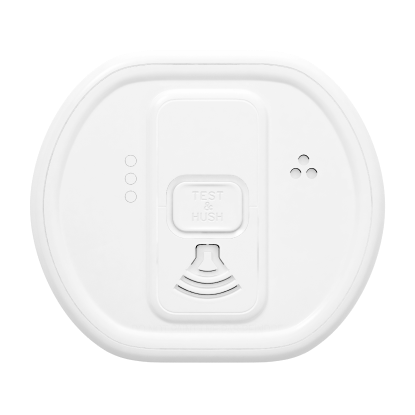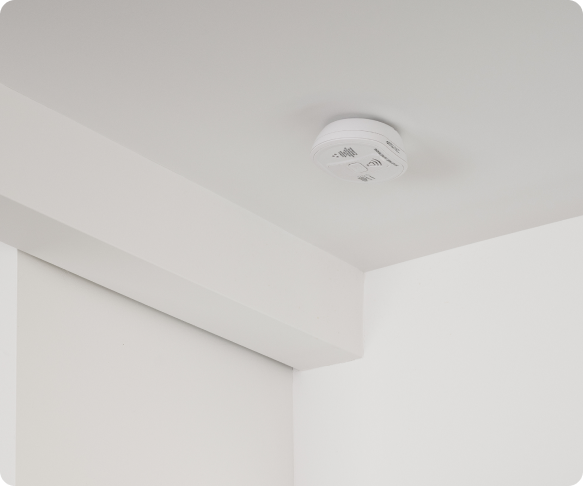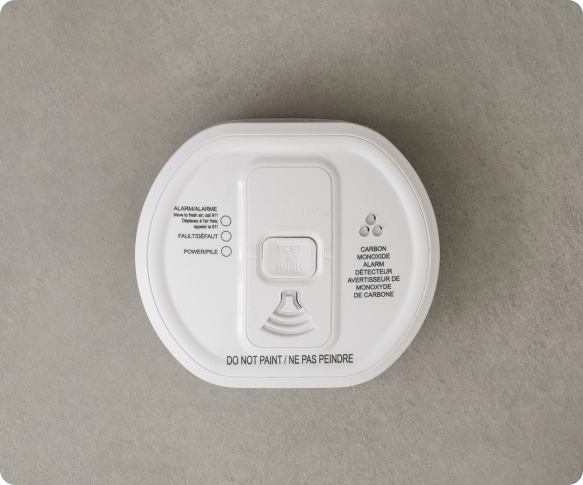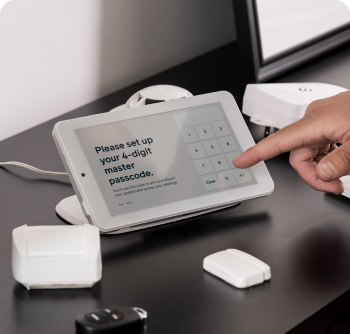Cove is actively dedicating resources to make our site, and our community, more accessible. While we make changes, if you need any assistance accessing the information on this site, please contact us at 855.268.3669 or support@covesmart.com. For those who are deaf or hard of hearing or who do not use voice channels to communicate, please contact us via email or via 711 or other relay services. If you have any feedback or suggestions as to how we could improve the accessibility of our website, please contact us at accessibility@covesmart.com. Please be aware that our site may contain links to other websites, the accessibility of which is not under our control. Please contact us if you run into any difficulties with these sites, and we will do our best to help you.
Accessibility
Protect your home from carbon monoxide.
From furnaces to gas stoves, everyone has a few items around their home that emit carbon monoxide. With our carbon monoxide detector, you can enjoy the warmth and yummy cooking without worrying about dangerous byproducts.

Alerts you at the first sign of danger.
A carbon monoxide leak can happen anytime, day or night. When there is a leak in your home, our carbon monoxide detector works with our security system to alert you and our 24/7 monitoring agents of dangerous carbon monoxide levels.

Stay connected wherever you are.
Through Cove's convenient mobile app, you'll know what's happening in your home—including if carbon monoxide is detected. If it's a false alarm, you can easily cancel it through the app. But if you need help, we'll quickly send emergency personnel your way.
Easy to set up. Easy to use.
Top-rated security. Real customer experiences.

LOVE the Cove security system!! The BEST alarm system I’ve ever had! And, in my opinion, it’s the BEST value in home security systems! If you want to protect your loved ones and your home, there’s nobody I trust more than Cove! I’ve recommended them to all my family and friends!

I found a site that reviewed the top 10 alarm systems and saw that Cove was in the top on each one. The equipment came quickly, and the installation could not have been easier. . . . I would ABSOLUTELY recommend to anyone who is looking for an alarm system.

Cove is an amazing system that gives us peace of mind. We get discounted homeowner's insurance, and our dog is protected since Fire and Police will be called and have been called. . . . The system works!

I have had this service for almost two years and only had a few problems, which were resolved quickly. I like it. It gives me peace of mind while away and at home. The service has been excellent. Thank you.

LOVE the Cove security system!! The BEST alarm system I’ve ever had! And, in my opinion, it’s the BEST value in home security systems! If you want to protect your loved ones and your home, there’s nobody I trust more than Cove! I’ve recommended them to all my family and friends!

I found a site that reviewed the top 10 alarm systems and saw that Cove was in the top on each one. The equipment came quickly, and the installation could not have been easier. . . . I would ABSOLUTELY recommend to anyone who is looking for an alarm system.
Try it for 60 days risk free

How does it work?
This sensor uses a built-in wireless transmitter to communicate with the hub. When carbon monoxide is detected, the alarm goes off, and the hub will alert the monitoring team!
Technical Specifications
How can we help you?
Reach out to our friendly customer support team!


